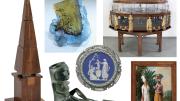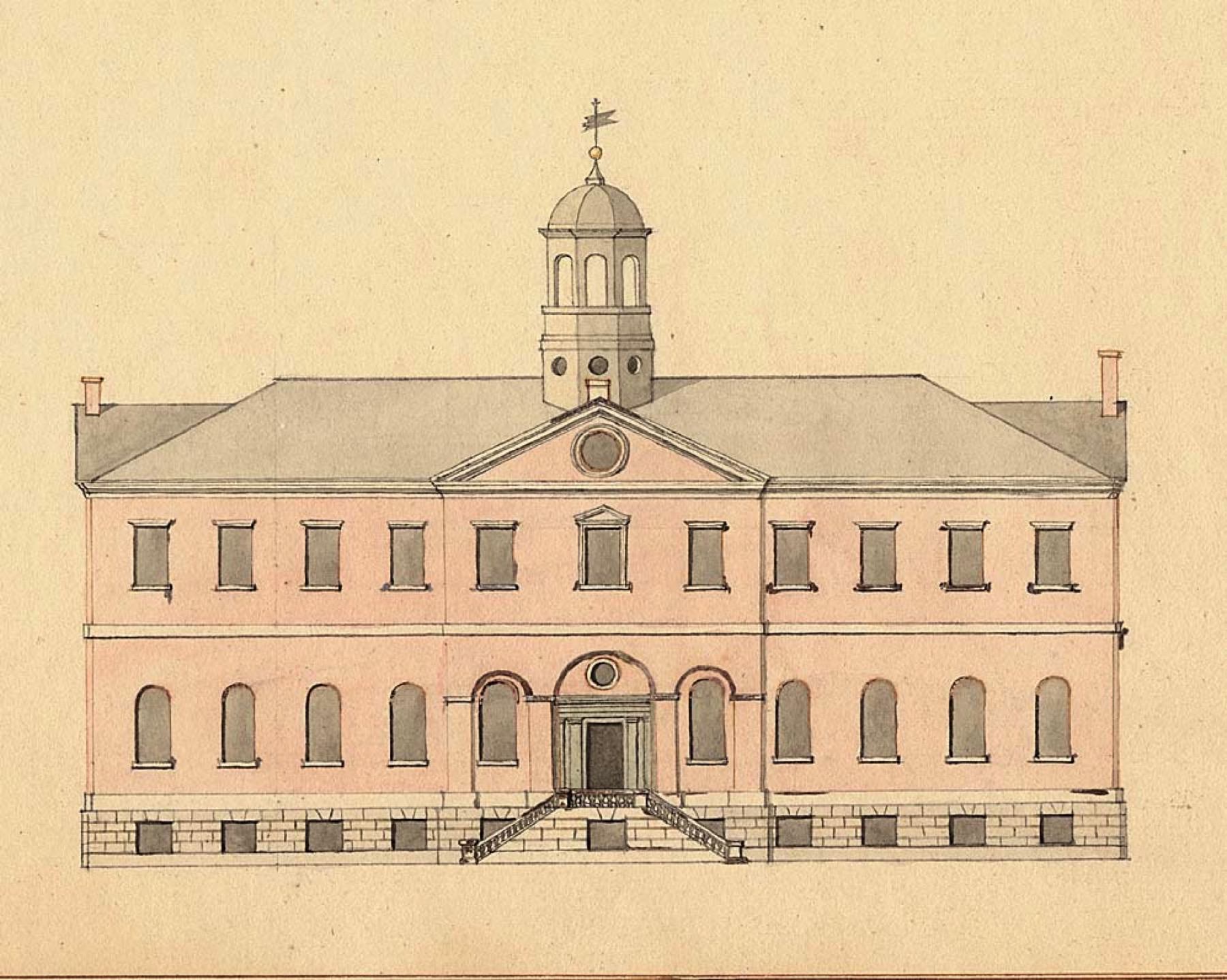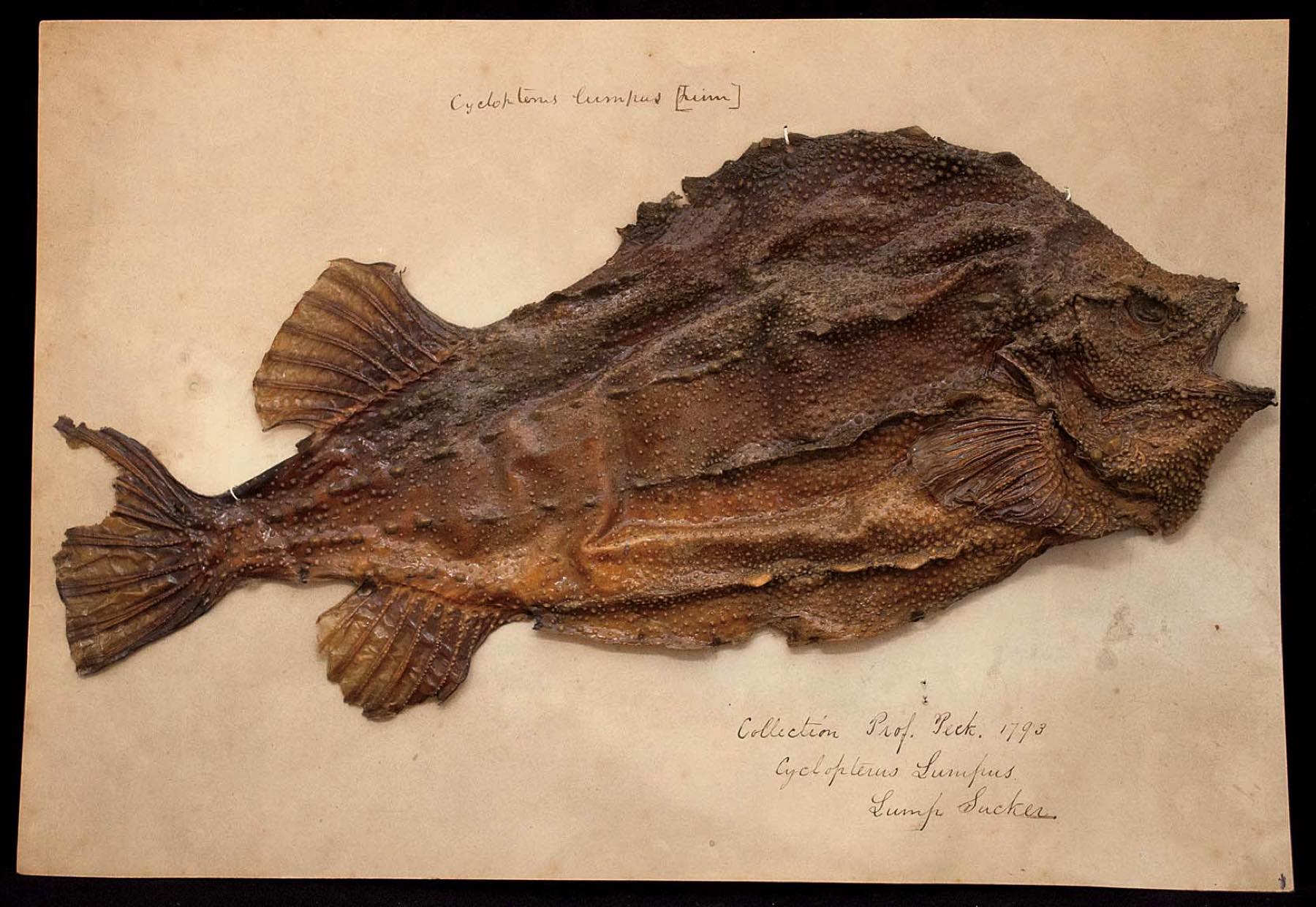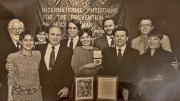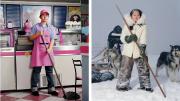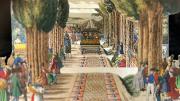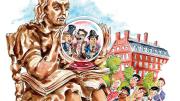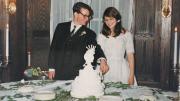Four years ago, Ethan Lasser was searching in Harvard’s archives for clues to the whereabouts of a portrait by John Singleton Copley, missing since the American Revolution, when he stumbled across records of something even more compelling: a lost museum. Repeatedly, the archives referred to a place called “the Philosophy Chamber.” This was “so intriguing and mysterious,” says the Stebbins curator of American art, “that the name got me digging a bit deeper.” He discovered that, in addition to three massive Copley portraits that once hung together on the east wall of Harvard Hall, “there were all kinds of other objects and activities in this room.” This launched Lasser on a quest to find the objects, many now scattered in obscure attics and on dusty shelves at Harvard and beyond. “Uniquely in North America,” he says, “a significant proportion still survive.” He aimed to reunite them, to recreate this lost museum.
In the eighteenth century, when the collection was formed, objects were understood to hold information. They were instructive. Instruments such as pendulums and prisms, as well as paintings, minerals, natural history specimens, and plaster casts of classical sculptures were among the many objects used to teach students—and were considered as critical to pedagogy as books. When a 1764 fire destroyed an earlier Harvard Hall and the College’s “philosophical apparatus,” for example, Hollis professor John Winthrop suspended his course in physics, mathematics, and astronomy.
South Front of Harvard Hall at Cambridge in New England (1767), an ink, pencil, and watercolor drawing on paper by Pierre du Simitière. The Philosophy Chamber was on the second floor.
Courtesy of The Library Company of Philadelphia
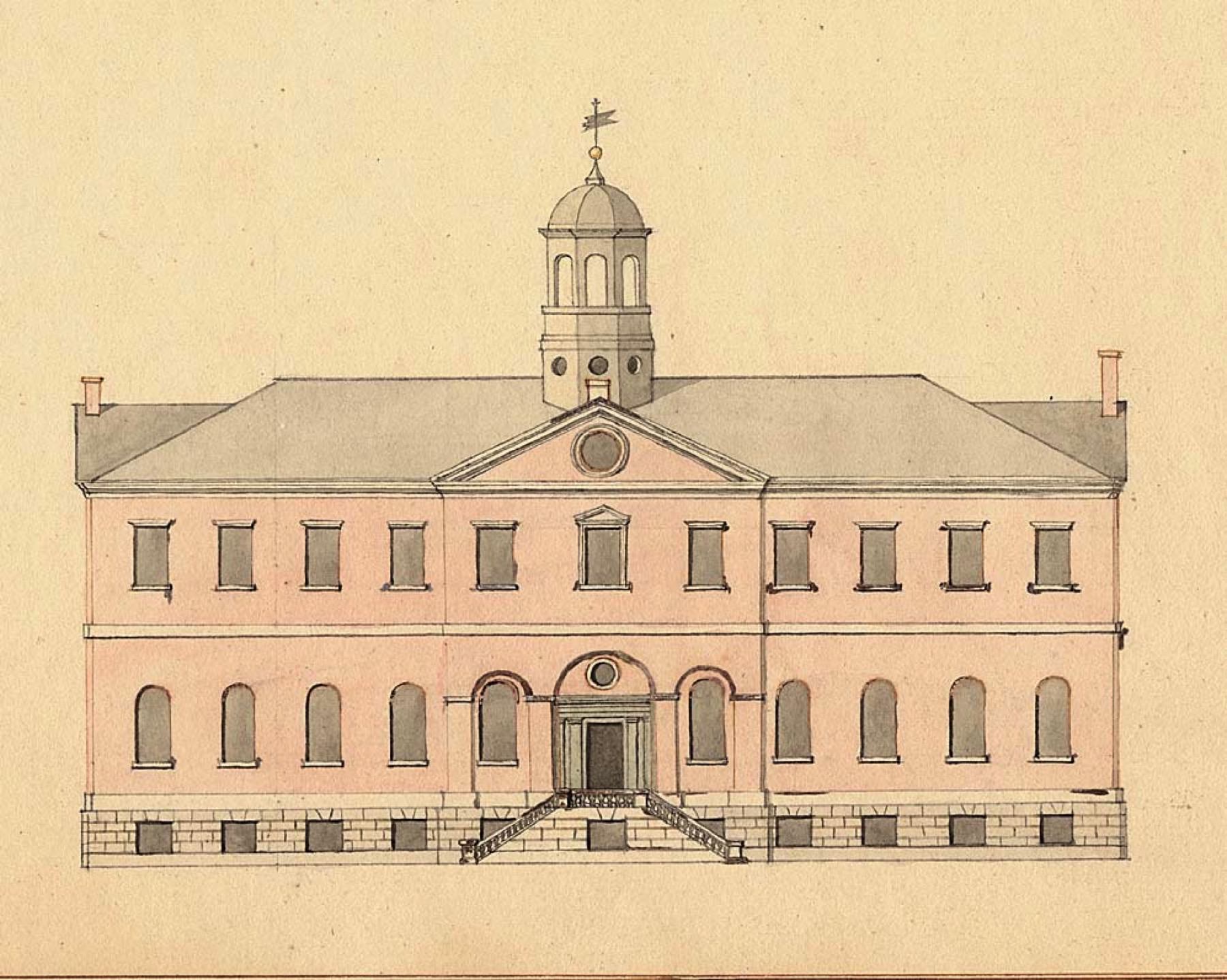
South Front of Harvard Hall at Cambridge in New England (1767), an ink, pencil, and watercolor drawing on paper by Pierre du Simitière. The Philosophy Chamber was on the second floor.
Courtesy of The Library Company of Philadelphia
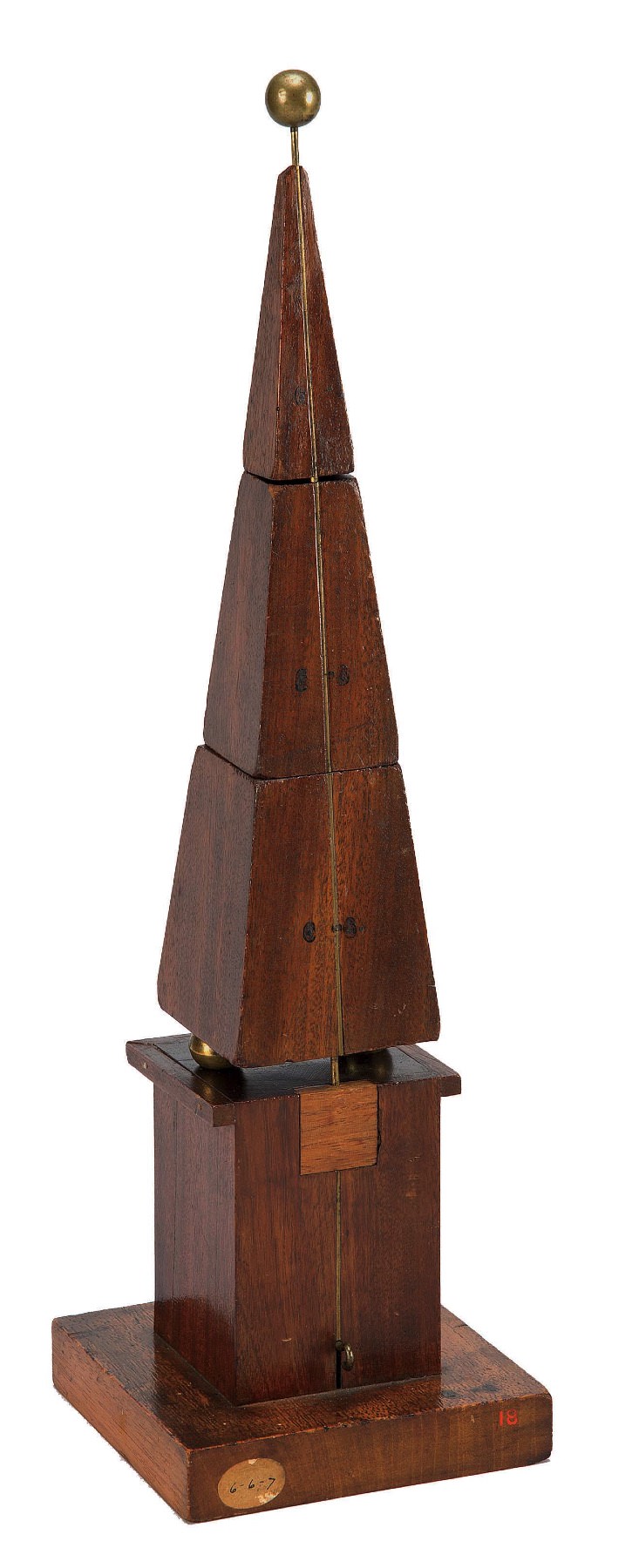
Benjamin Franklin, A.M. 1753, while in England protesting the Stamp Act, helped Harvard secure new scientific instruments from abroad after a devastating 1764 fire. This jointed mahogany steeple (George Adams I or II, c. 1765) may have been among them. When struck with electricity from an electrical machine (see next image), the structure topples, unless grounded with a lightning rod—a Franklin invention. See video of this demonstration here.
Courtesy of the Collection of Historical Scientific Instruments. © President and Fellows of Harvard College.
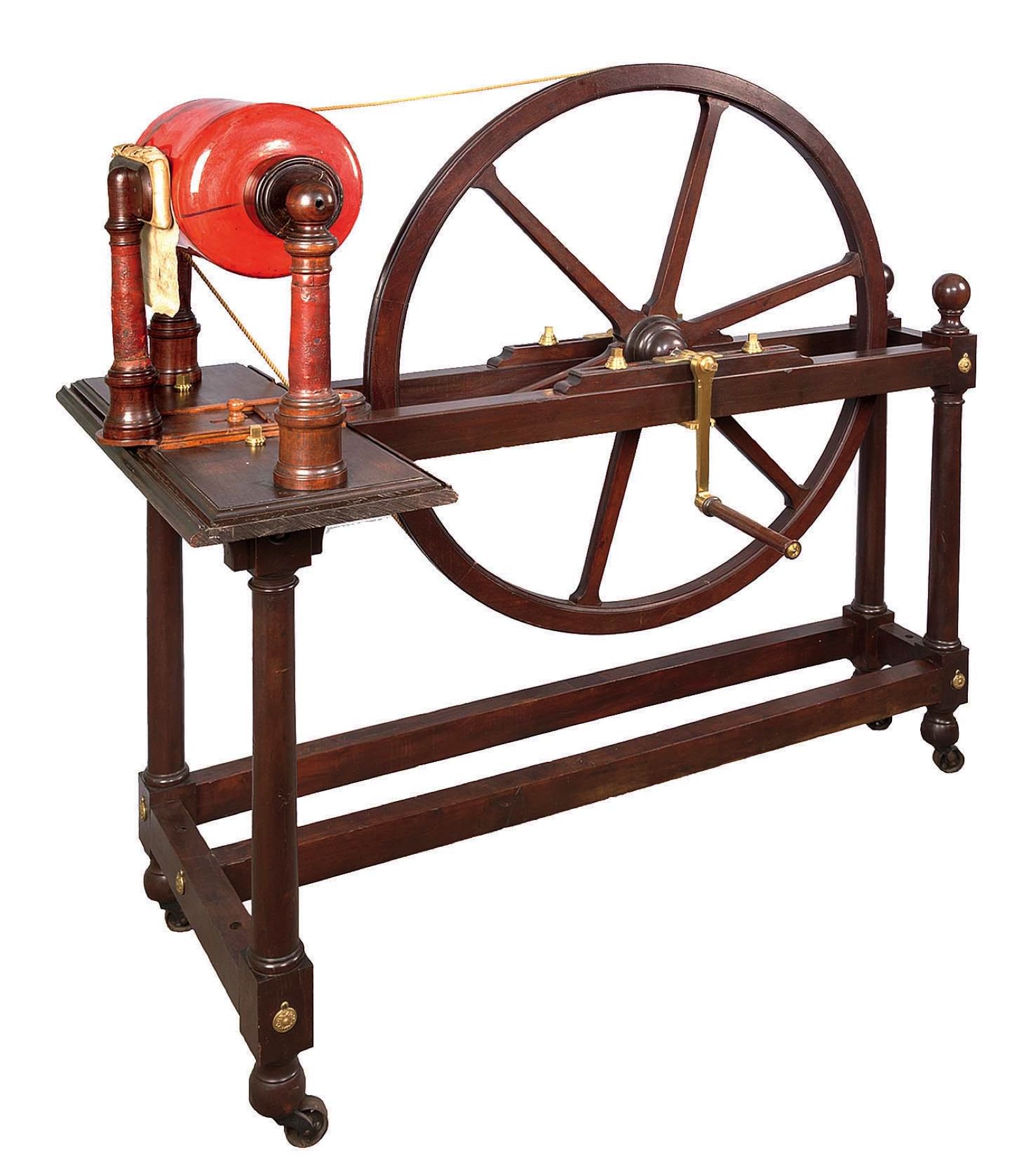
Turning the crank of this cylinder electrical machine (built by Benjamin Martin, c. 1766) generated an electrostatic charge used in scientific demonstrations.
Courtesy of the Collection of Historical Scientific Instruments. © President and Fellows of Harvard College.
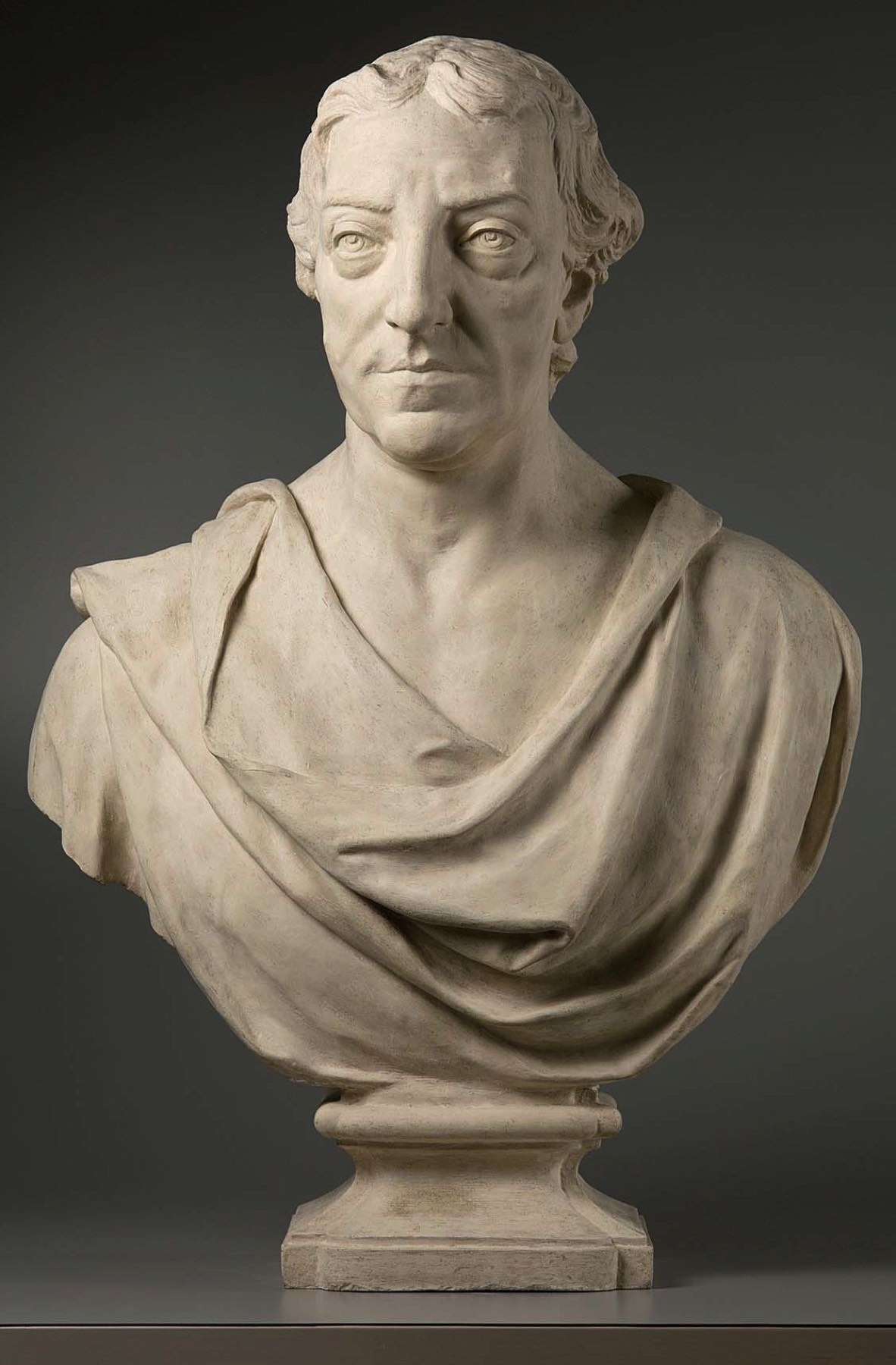
The Harvard Corporation thanked Franklin in 1769 for sending from London this “fine bust” (c. 1766-69), by Joseph Wilton, of William Pitt the Elder, Earl of Chatham, “that great assertor of American liberties….” “The Great Commoner” advocated for the repeal of the Stamp Act in 1766. Among Harvard’s first sculptures, this bust stood in the Philosophy Chamber in the years before the Revolution.
Harvard Art Museums. Photograph by Anthony Sigel. © President and Fellows of Harvard College
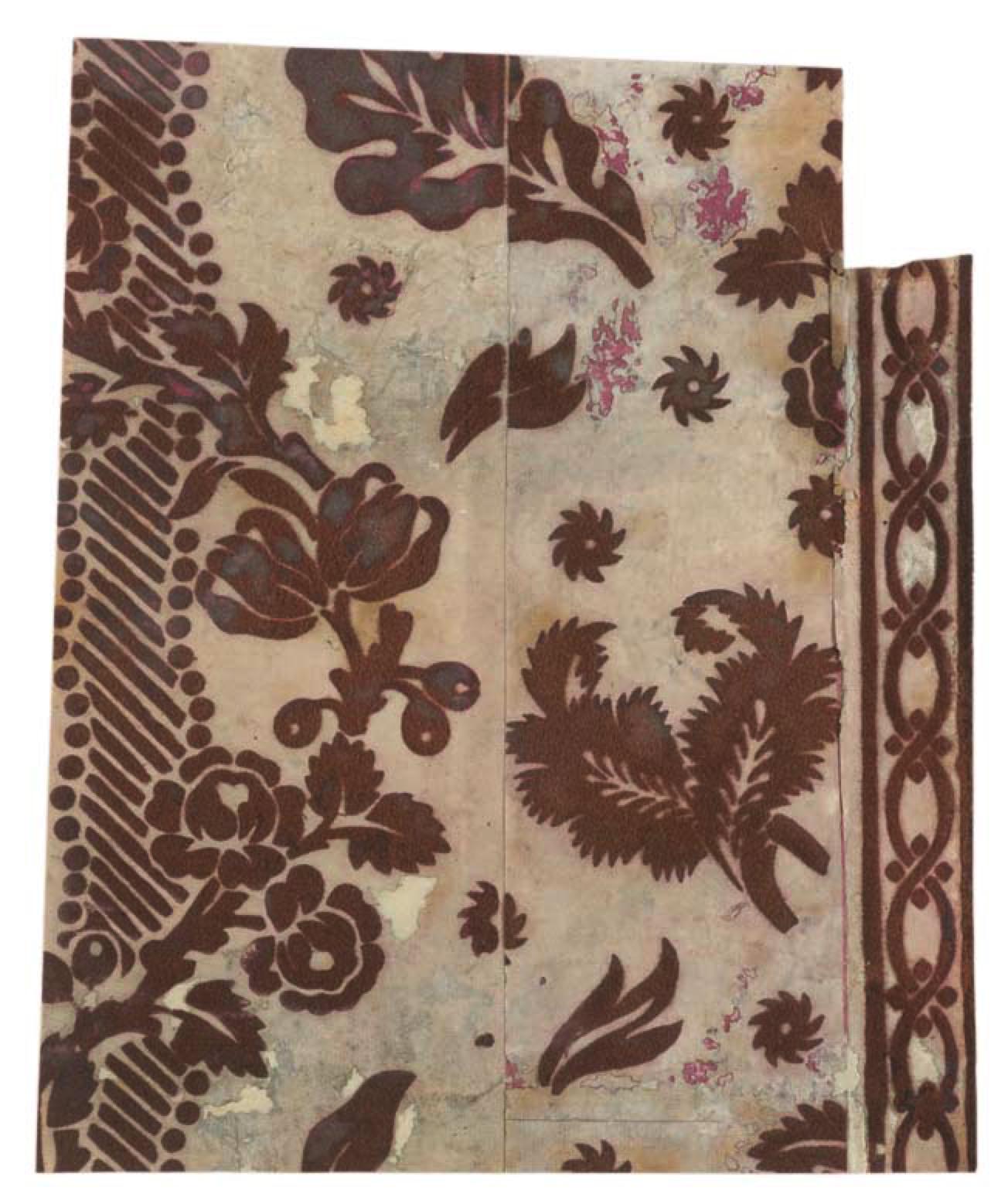
A faded sample of the bold, block-printed, and flocked wallpaper (British, 1764-66), donated by John Hancock, that hung on the Philosophy Chamber’s walls.
Harvard Library Imaging Services. © President and Fellows of Harvard College
In an essay titled “Harvard’s Teaching Cabinet,” Lasser writes that this was because “the central theories that students needed to master in order to understand the workings of nature” could not be explained without the use of “the balance, pulley, lever, screw, wedge, and inclined plane to illustrate the ‘mechanical powers’…pendulums and projectiles to show the laws of motion…and prisms to separate light into the colors of the spectrum.” Winthrop also used an orrery, a mechanical model of the solar system, to explain the “motion of the Moon round the Earth & of both round the Sun as their Center.” His class resumed in 1766, when Harvard Hall had been rebuilt and the apparatus partially replaced.
The layout of the reconstructed building, where all Harvard’s books, instruments, and collections of objects were housed above the first-floor chapel and common room, also suggests that, pedagogically, texts and objects were on equal footing: a library occupied the west room, and the Philosophy Chamber, with its elegant woodwork and flocked wallpaper (a fragment of which survives in the archives), occupied the east. George Washington visited the chamber; Benjamin Franklin, then in London on a diplomatic mission, helped procure scientific instruments; and Copley, even as an expatriate after the war, sought to ensure that his work was displayed there, suggesting that the importance of this space was more than purely academic (see “Facing Harvard,” November-December 2016, page 42, on the Copley paintings). And the chamber’s implications for pedagogy reverberate into the present: the idea that objects embody knowledge that texts cannot underlies the recent redesign of the Harvard Art Museums as a teaching machine for the modern University (see “Unleashing Harvard’s Art Museums,” November-December 2014, page 18). As Agassiz professor of the humanities Jennifer L. Roberts, a contributor to the exhibition that will recreate and reinterpret the Philosophy Chamber, puts it: “This is a great moment for this museum to consider its own place in the history of Harvard.”
Transatlantic Exchanges
The creation of the Philosophy Chamber (named for natural philosophy, the study of nature and the physical universe) was hardly an isolated exercise in the 1760s. Mungo Campbell, deputy director of The Hunterian, the great museum at the University of Glasgow that originated around the same time, notes that a whole range of transatlantic investigations date to this period, rooted in collections like the one founded in the 1730s at the University of Göttingen by the Hanoverian dynasty. “Göttingen was a university with a museum at its heart,” says Campbell, “guided by similar ideas that a collection should generate knowledge as readily from a Rembrandt as from insects, geological specimens, and art books.” The repositories at the Royal Society in London, at Harvard, Yale, and Princeton were all, he explains, “part of this Hanoverian world of research and teaching.” They represented a decisive movement toward ordered, taxonomically logical collections specifically gathered and catalogued to support the advancement of knowledge, says Campbell, and away from an antiquarian mode of collecting, the model on which even the British Museum had initially been formed.
After the fire of 1764 decimated Harvard’s collections, leaving nothing but the books and instruments that had been out on loan, the College published appeals throughout the colonies and in England seeking replacements. The Corporation then recorded the numerous gifts in money and kind that arrived in Cambridge, and thanked the donors. These records, some vague at best (an acknowledgement for “a copy of the figures on a rock at Taunton”), guided Lasser (see Harvard Portrait, May-June 2016, page 20) and his colleagues in finding those objects designated for the Philosophy Chamber.
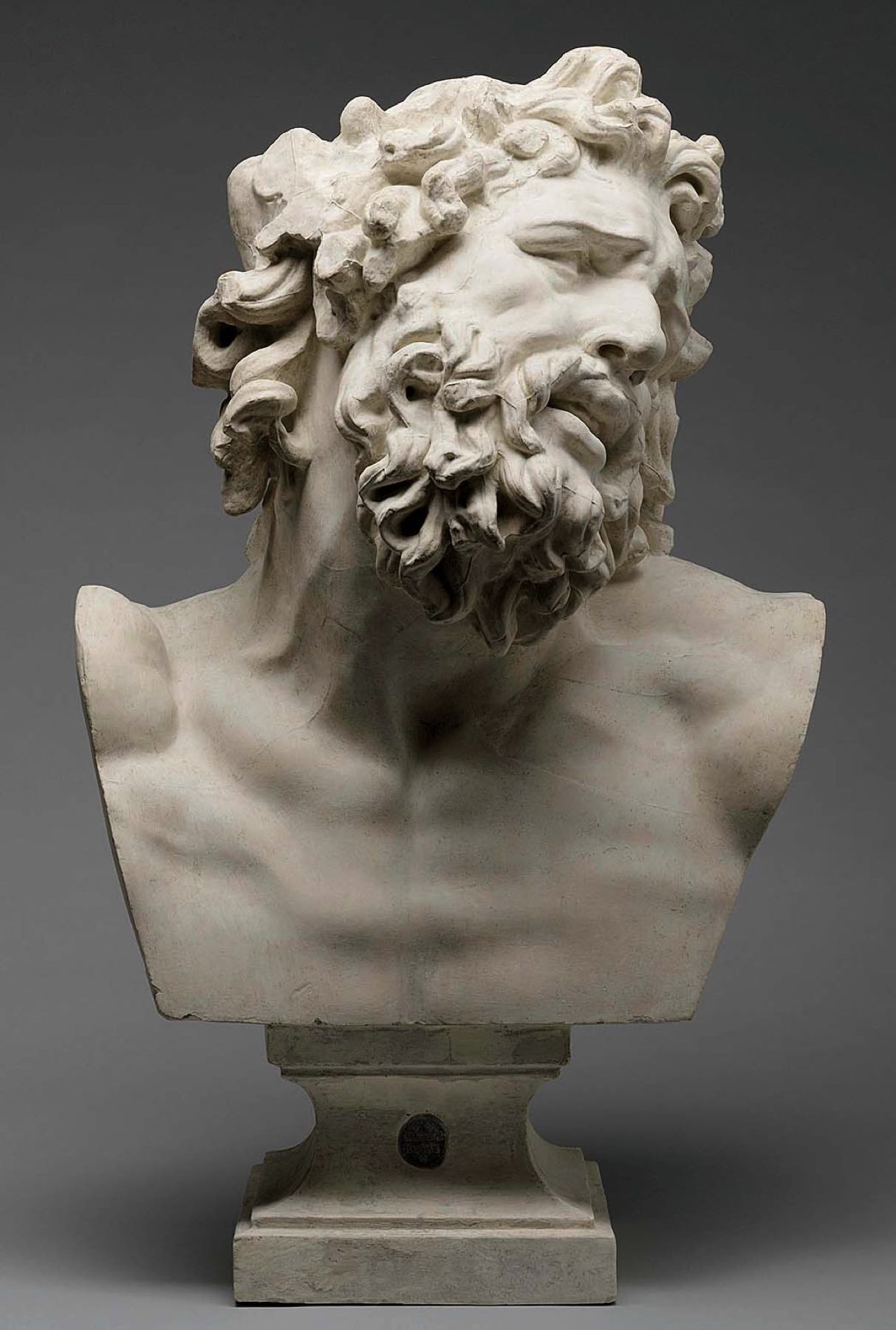
After capturing the original marble sculpture Laocoön and His Sons during an invasion of Italy, the French began selling reproductions like this plaster cast of the head of Laocoön, by Jean-André Getti (c. 1803). These objects taught students about the wonders of ancient sculpture. Professor of Greek literature (and later Harvard president) Edward Everett, A.B. 1811, wrote that they hinted at the magnitude of what was lost during the destruction of Rome in antiquity.
Harvard Art Museums Department of Digital Imaging and Visual Resources. © President and Fellows of Harvard College
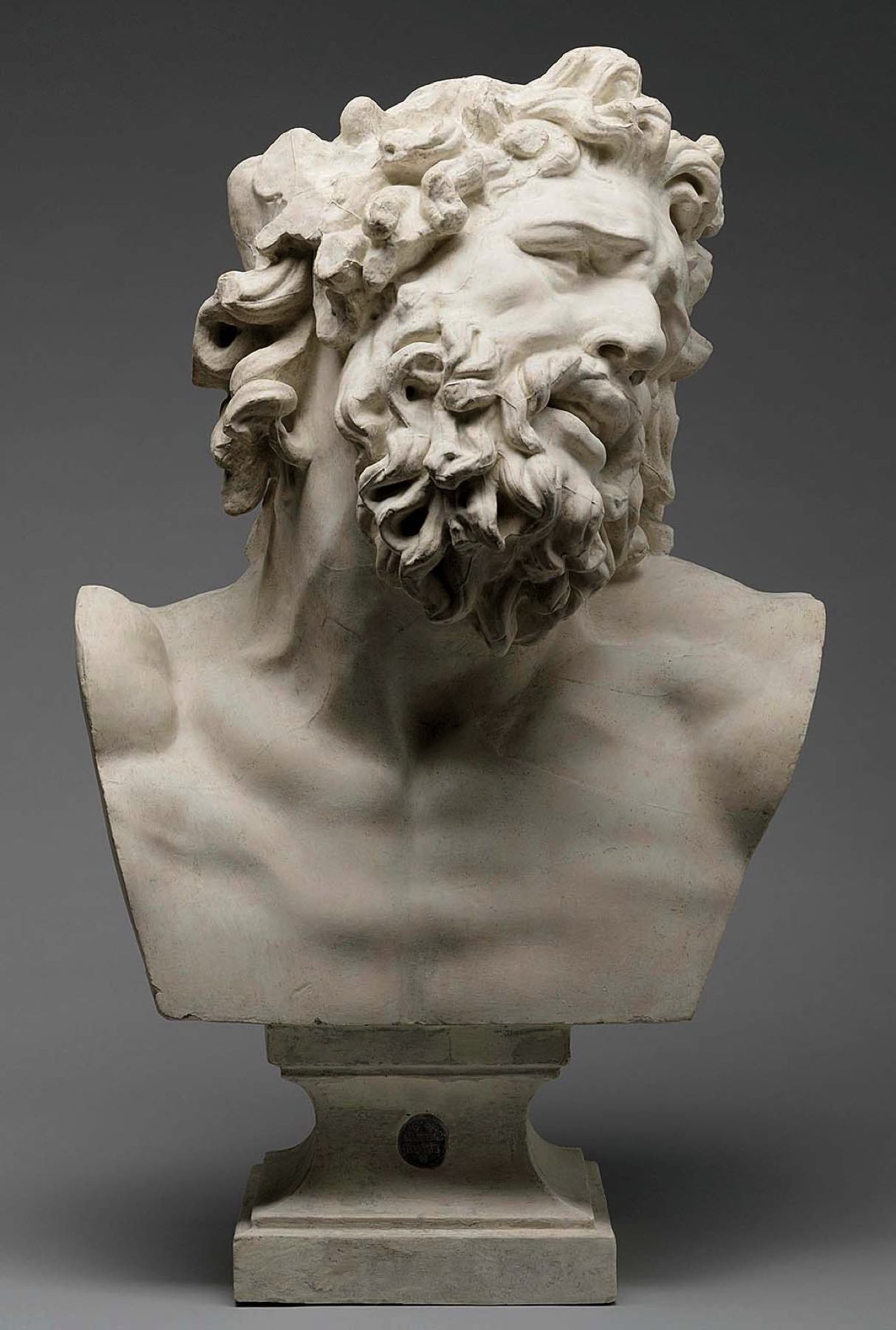
After capturing the original marble sculpture Laocoön and His Sons during an invasion of Italy, the French began selling reproductions like this plaster cast of the head of Laocoön, by Jean-André Getti (c. 1803). These objects taught students about the wonders of ancient sculpture. Professor of Greek literature (and later Harvard president) Edward Everett, A.B. 1811, wrote that they hinted at the magnitude of what was lost during the destruction of Rome in antiquity.
Harvard Art Museums Department of Digital Imaging and Visual Resources. © President and Fellows of Harvard College
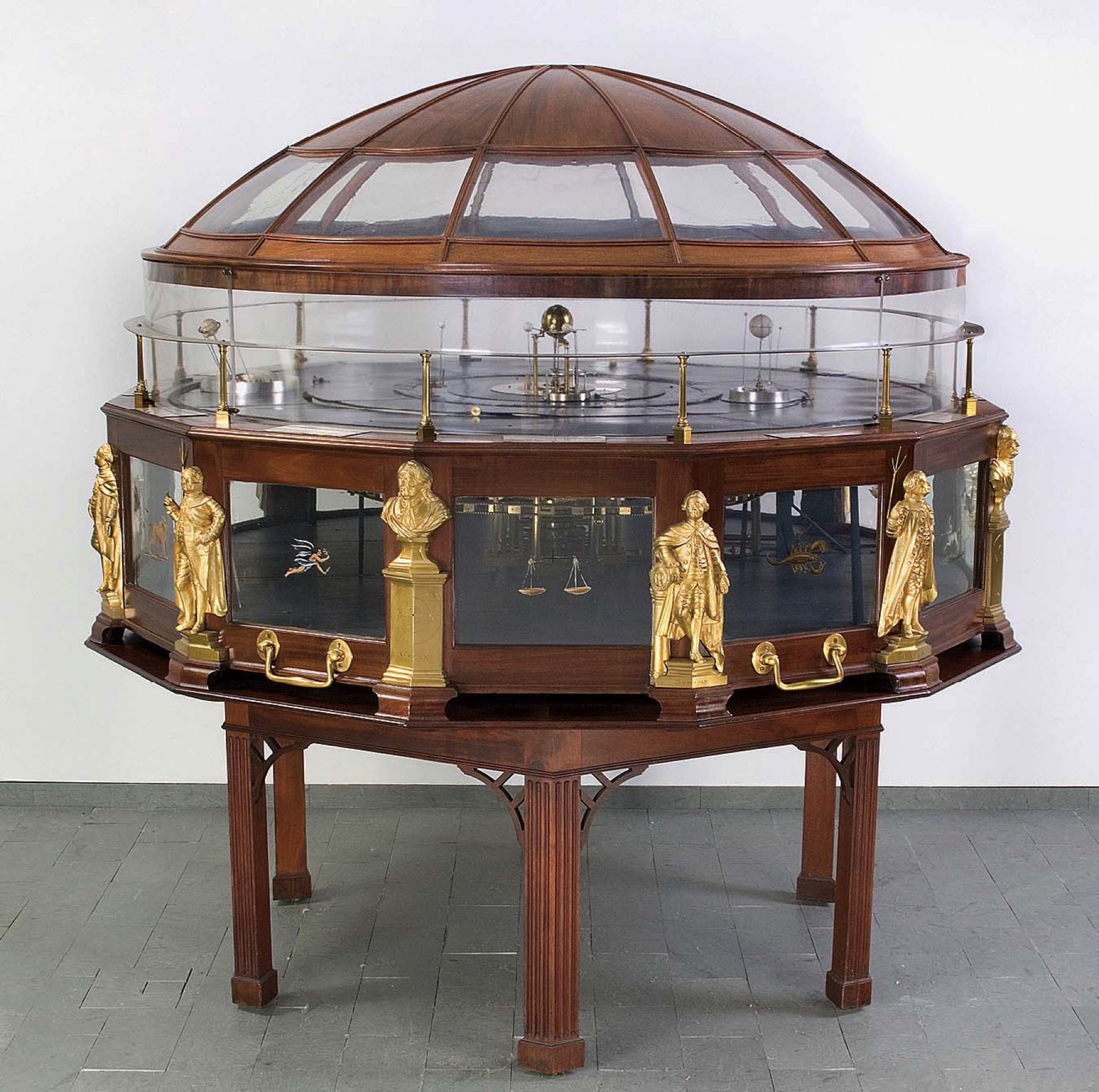
Joseph Pope of Boston, a clockmaker, created this “grand orrery” (c. 1776-87), which is five and half feet in diameter. A model of the solar system designed to demonstrate the motions of six of the known planets and their 10 satellites, its purpose was equally to establish American prowess in science and the arts.
Courtesy of the Collection of Historical Scientific Instruments. © President and Fellows of Harvard College
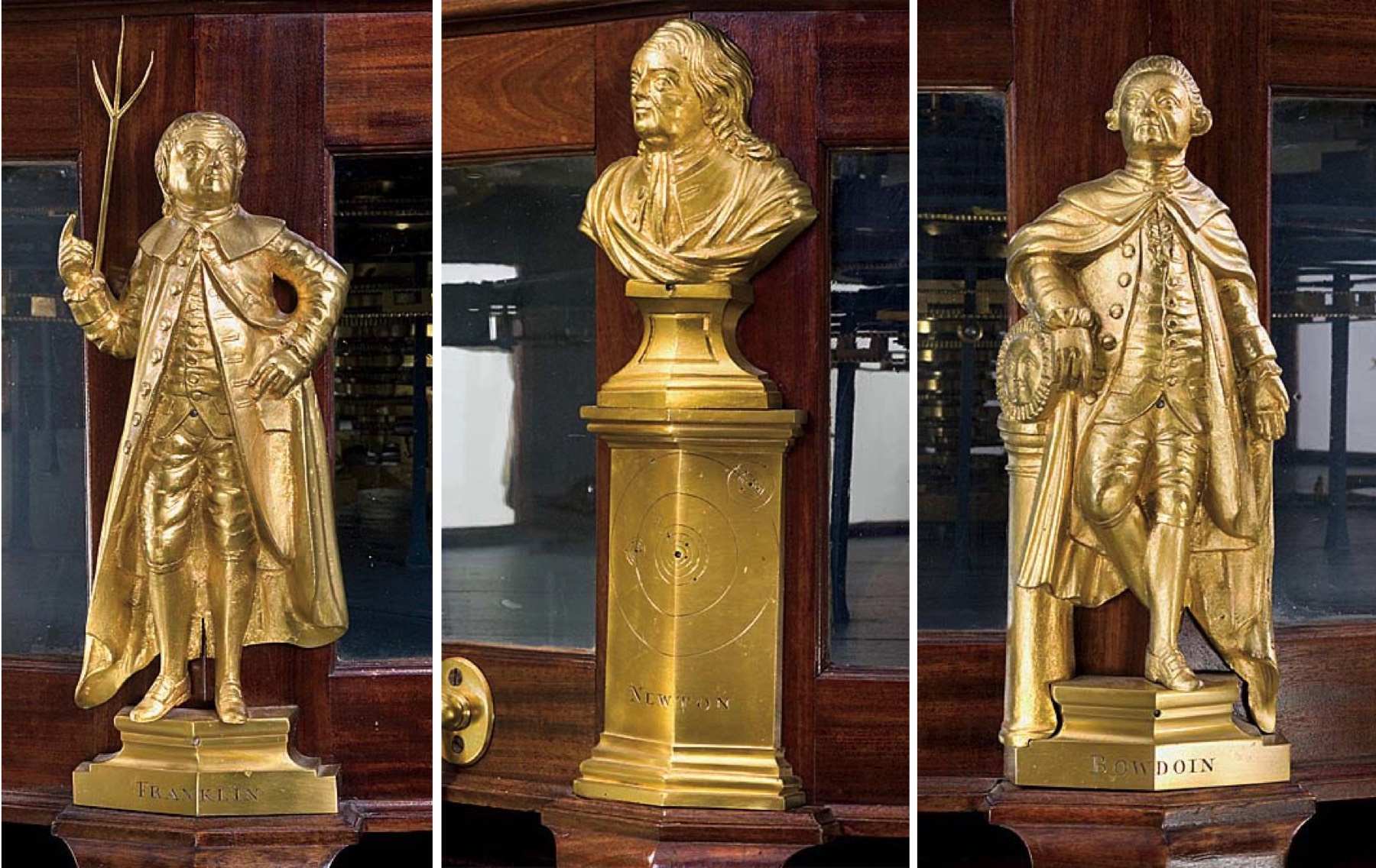
The gilded statuettes that ring the mahogany case place Americans Benjamin Franklin and Massachusetts governor James Bowdoin, A.B. 1745, a noted patron of science, alongside Sir Isaac Newton.
Courtesy of the Collection of Historical Scientific Instruments. © President and Fellows of Harvard College
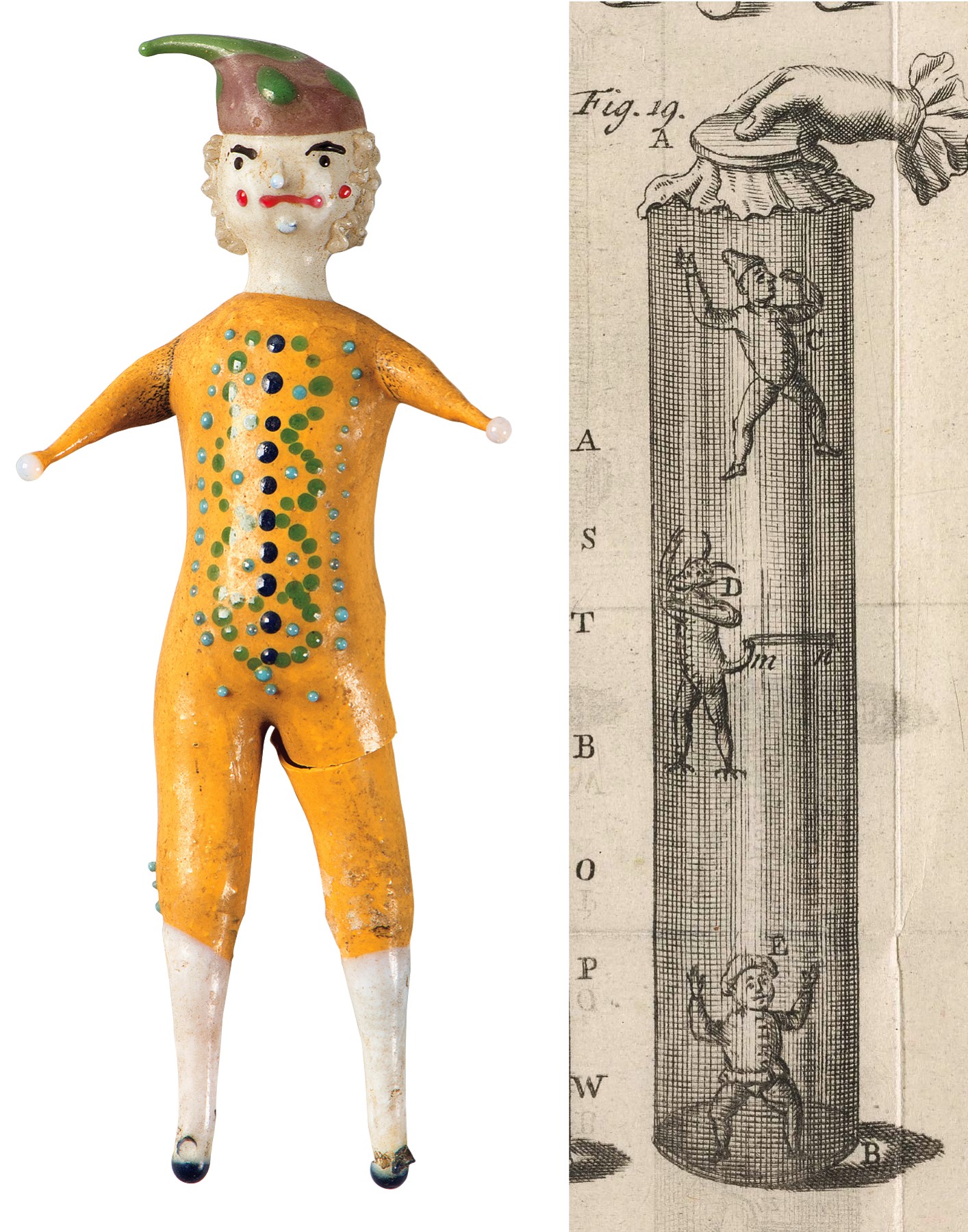
Rendered as clowns, acrobats, or devils, these glass “Cartesian Divers” (created by Benjamin Martin, c. 1765) dove up and down in response to pressure changes in a three-foot-long tube filled with water. As the instructor pressed imperceptibly on an elastic membrane atop the tube, the figures danced, memorably demonstrating the effect of hydrostatic pressure changes.
From left: Courtesy of the Collection of Historical Scientific Instruments. © President and Fellows of Harvard College Harvard Library Imaging Services. ©President and Fellows of Harvard College
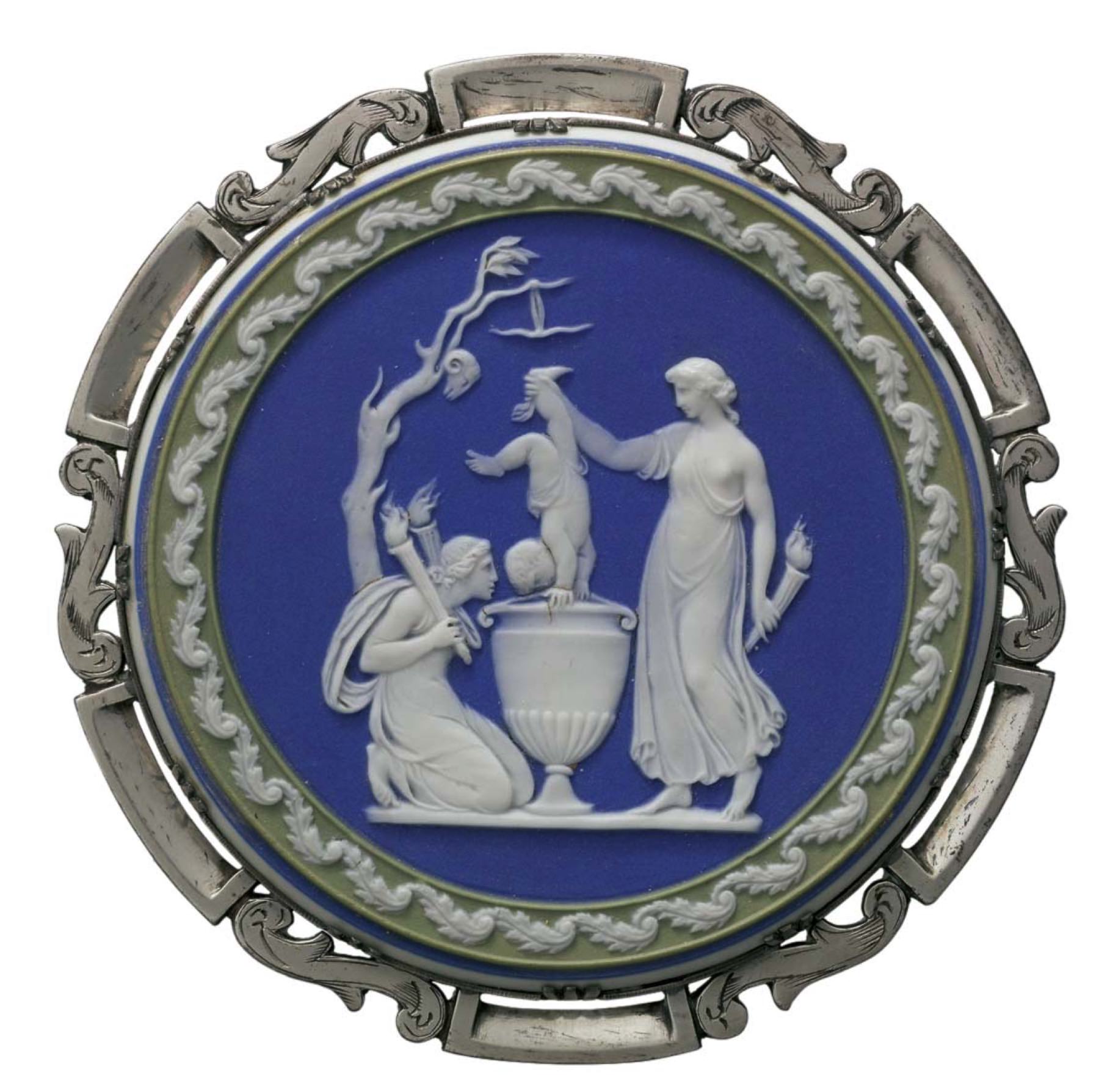
Wedgwood jasperware medallions depicting scenes from antiquity brought the classics to life for students in the eighteenth century. Here, Thetis dips Achilles in water from the river Styx to render him invulnerable (except where she grips him by the heel). The scene had pedagogic meaning, too: in the frontispiece to Émile, Or, On Education (which entered Harvard’s library in 1774), Jean-Jacques Rousseau used the image to underscore his contention that children should be protected from the complexity of society, including formal education, until the age of 15.
Harvard Art Museums Department of Digital Imaging and Visual Resources. © President and Fellows of Harvard College
The “copy of the figures on a rock” turned out to be one of the most illuminating of Lasser’s finds. This was a tracing on paper from 1768, 11 feet long and three feet high, with inks still vibrant, of an inscription on a massive rock found in a tidal zone at the mouth of the Taunton River in southeastern Massachusetts. Lasser, with help from curators at the Peabody Museum, had found the full-scale drawing rolled up in that museum’s storage.
In the eighteenth century, the inscriptions on the rock were attributed by some scholars to Phoenician sailors. Could North America, then on the verge of recreating a new society modeled on the Athenian city-state, trace an origin to the Greeks? Or were the marks caused by erosion, the work of countless tides? As study of the rock continued, no two renderings of the inscriptions matched, though many were made. The Royal Society commissioned its own copy, so its experts could attempt to decipher the markings. Later theories centered on the Chinese, says Lasser, and then “in the nineteenth century, the Vikings.” Consensus on the markings’ meaning proved impossible.
“The drawing became the catalyst for all kinds of European, British, and French discussions about who was in North America first,” Lasser continues. “So that mysterious entry unlocked not only this extraordinary object but also this story of transatlantic communication, America’s role in global history, and Harvard’s role in creating the specimens upon which global history was built.”
Eighteenth-century attitudes toward indigenous peoples in North America and elsewhere blinded most of the scholars who studied the markings from seeing what now seems obvious: that the Wampanoag peoples of southeastern Massachusetts made them. (For more on evolving interpretations in anthropology, see the Treasure on the Peabody Museum, page 80.)
Denouement for a Collection
And then, for the Philosophy Chamber, “the end comes abruptly,” Lasser says. “They are continuing to receive donations and then in the 1810s, comes a proposal. ‘There are so many books coming in that there is no room for them all. Let’s take over the Philosophy Chamber.’ There is no record in the minutes of someone saying, ‘No, that is a terrible idea,’” he recounts. “About five years later, the Corporation contracts with a carpenter to remove the partitions that separate the library from the Philosophy Chamber to actually make it one room.”
“Why did it happen so easily?” Lasser asks rhetorically. “Harvard was growing and knowledge was breaking apart into disciplines, each taught in its own physical space. Whereas natural history, astronomy, physics, and biology were once all taught in one room, now there is a chemistry lab. [It’s] an era of specialization with professors for different fields. The idea of a room to contain the whole body of knowledge—by 1810, it is just not how they think anymore.” The centrifugal force of specialization was not limited to the academy. In Harvard’s case, collections were spun off to the natural history museum in Boston, to a coin collection at the Boston Athenaeum, and to the Massachusetts Historical Society.
At the same time, Lasser says, “The objects are decaying. Bugs are getting into taxidermy, things are breaking, scientific instruments are checked out like a book and never returned. The collection is literally crumbling.” Still, he continues, “It is not insignificant that the library takes over. Do you want to learn from things or from books? Clearly—and it is not unique [to Harvard]—the decision is to go with texts, not with coins, say, or minerals. That is another movement: that we don’t trust the objects any longer.”
Professor of natural history William Dandridge Peck prepared fish specimens by slitting them in half, removing bones, organs, eyes, and flesh, and sewing the skins to paper. Specimens like this flattened lumpfish were used to teach Linnaean classification in the Philosophy Chamber.
Courtesy of the Ichthyology Department, Museum of Comparative Zoology. Photograph by Andrew Williston. © President and Fellows of Harvard College
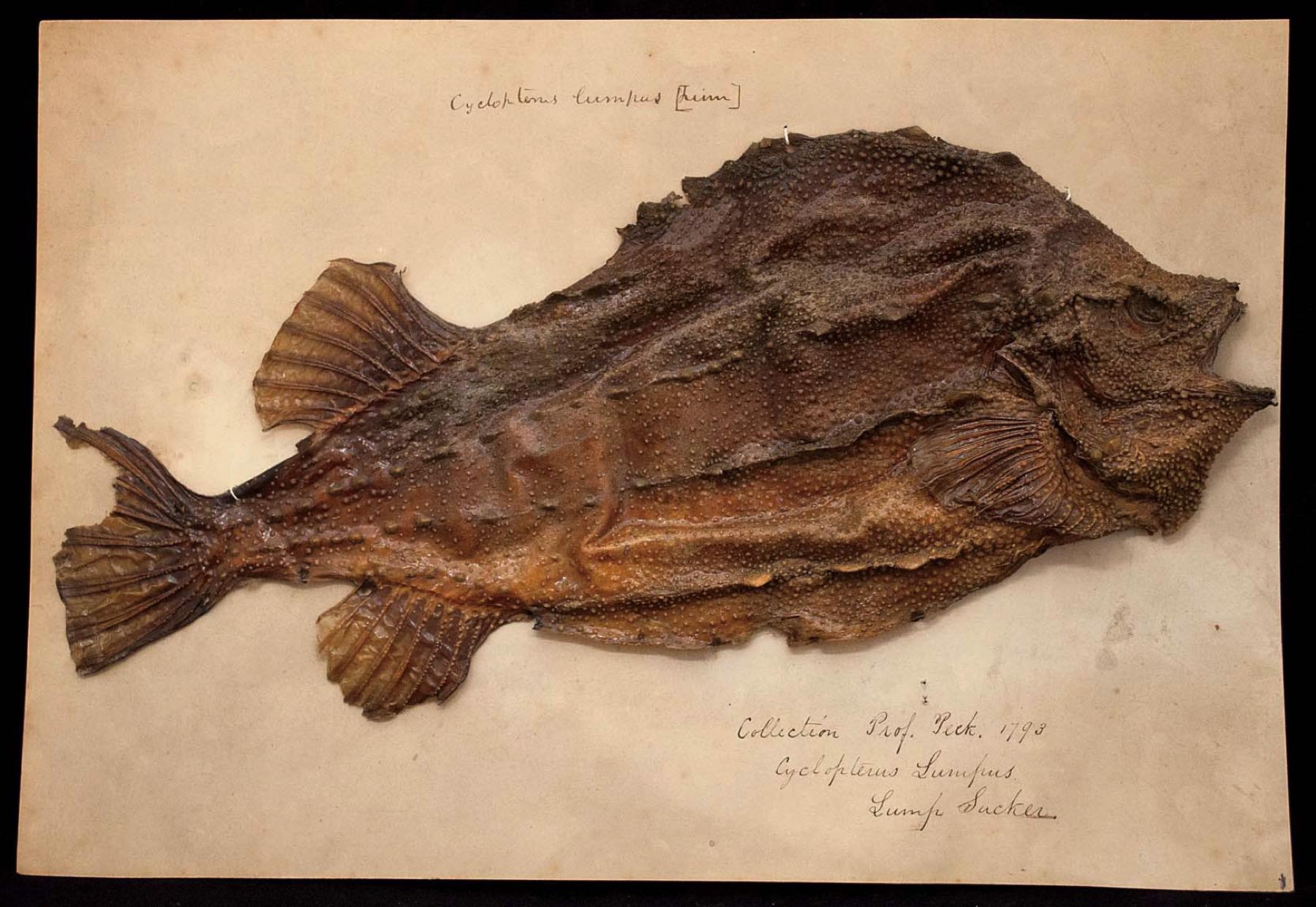
Professor of natural history William Dandridge Peck prepared fish specimens by slitting them in half, removing bones, organs, eyes, and flesh, and sewing the skins to paper. Specimens like this flattened lumpfish were used to teach Linnaean classification in the Philosophy Chamber.
Courtesy of the Ichthyology Department, Museum of Comparative Zoology. Photograph by Andrew Williston. © President and Fellows of Harvard College
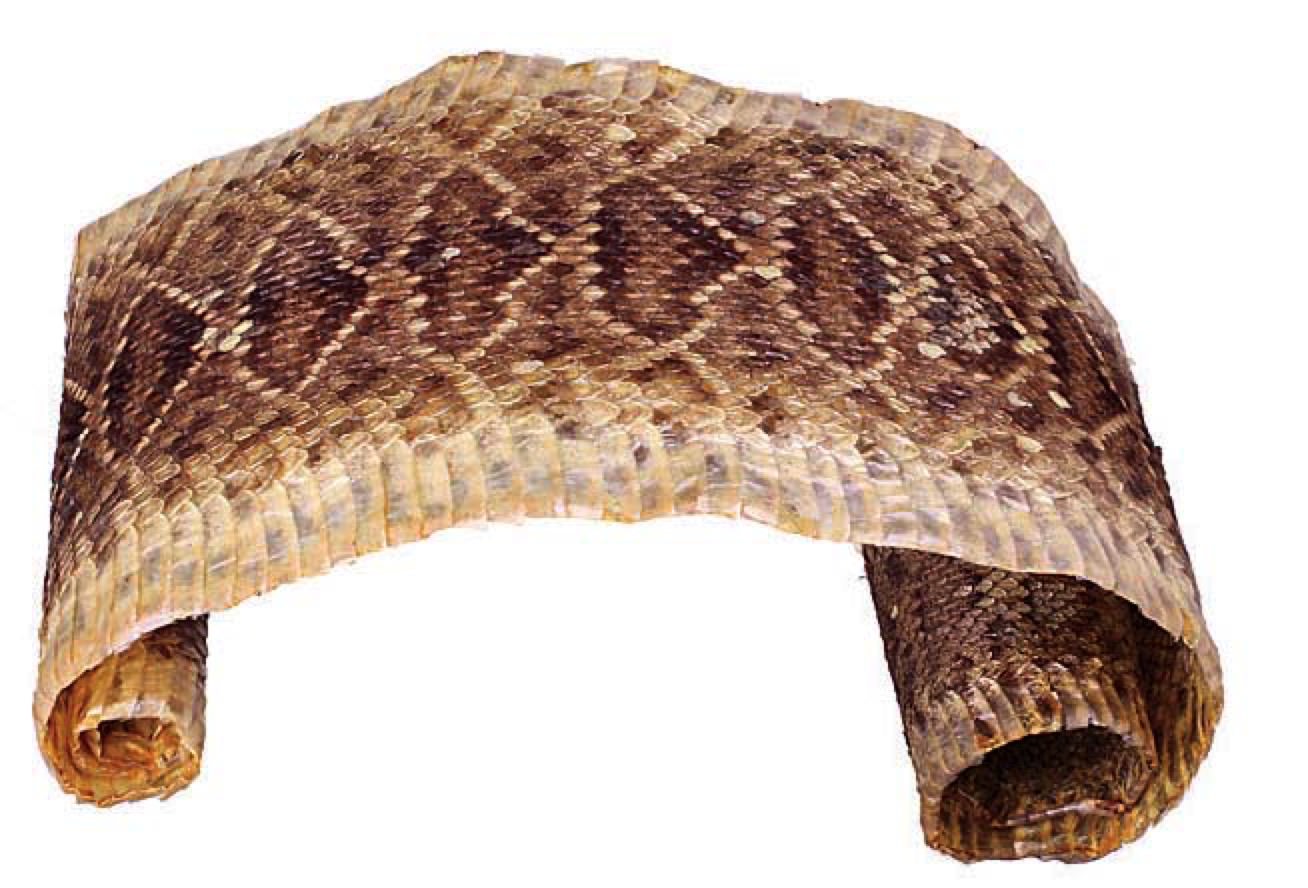
In 1778, a “Miss Meriam” donated a flattened rattlesnake skin like this one for the study of natural history.
Courtesy of the Herpetology Department, Museum of Comparative Zoology. Photograph by Jeremiah Trimble. © President and Fellows of Harvard College
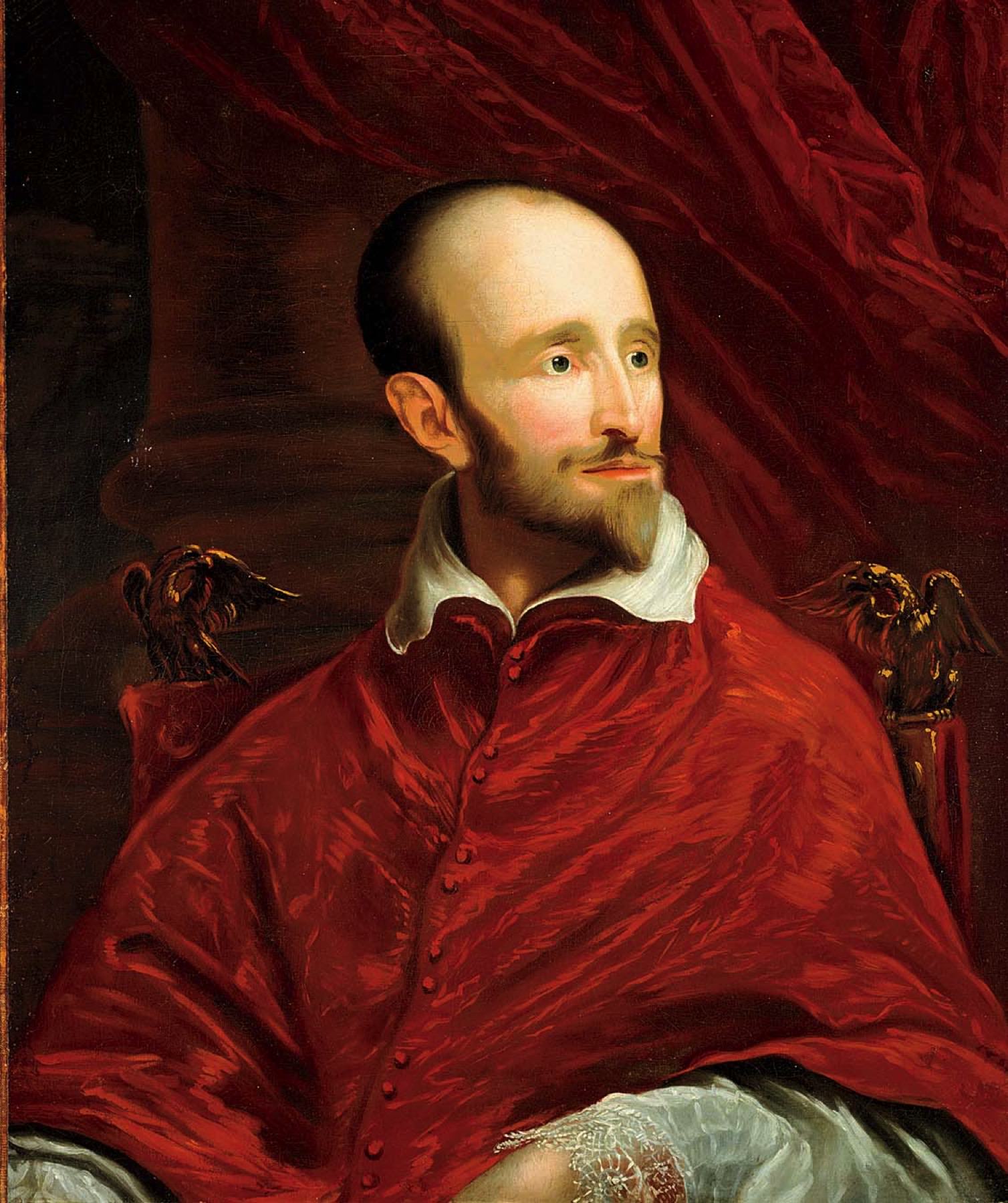
This copy (1719-20) by American artist John Smibert of Anthony van Dyck’s Cardinal Guido Bentivoglio (1623) was donated by artist John Trumbull, whose portrait of George Washington also hung in the Philosophy Chamber. The Bentivoglio was both given and received with the hope “that this copy will be highly useful to beginners.”
Harvard Art Museums Department of Digital Imaging and Visual Resources. © President and Fellows of Harvard College

More than 800 minerals were housed in a custom cabinet 18 feet long, perhaps the largest piece of case furniture in New England at the time, and the largest object from the Chamber to remain missing. Shown (from left) are fluorite, barite sulfate, silver, and barite.
Courtesy of the Mineralogical and Geological Museum. Photographs by Theresa Smith. © President and Fellows of Harvard College
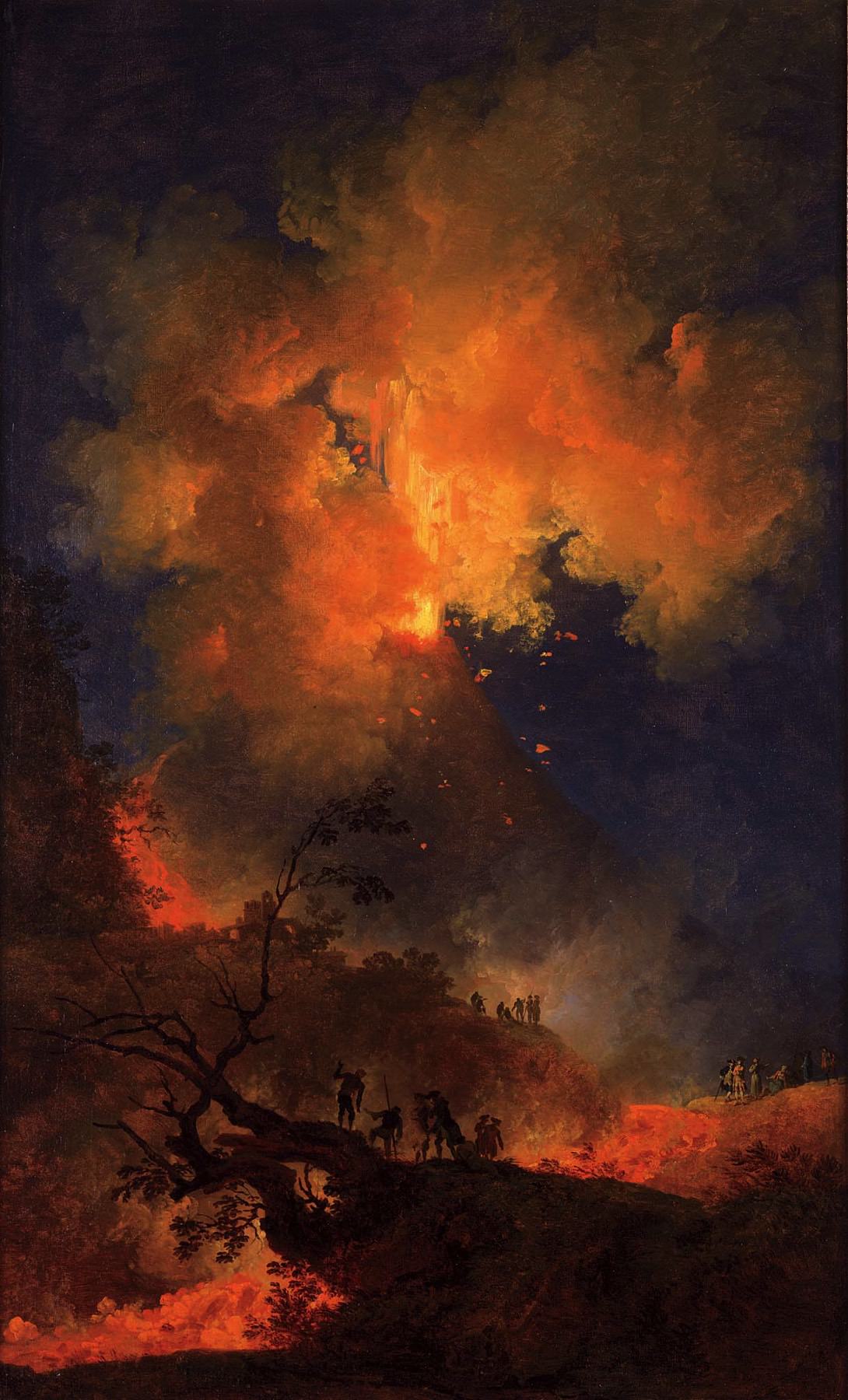
Vesuvius Erupting at Night (1767), by Pierre-Jacques Volaire, united art with science in the service of pedagogy. A similar work, now lost, hung above the fireplace near the bust of the Earl of Chatham, replacing the John Singleton Copley portrait of despised royal governor Sir Francis Bernard, from which the heart was cut out in the dead of night in 1768.
Courtesy of Compton Verney Art Gallery and Park, Warwickshire, U.K.
The shift to pedagogy based on texts and lectures was swift and decisive. Jennifer Roberts points out that a collection of books in a library “allows you to imagine that you have created a truly comprehensive collection of knowledge in a much smaller space” than that required for a collection of objects or instruments. In this sense, “The book is a kind of economical information technology that can masquerade as a substitute for the objects. I imagine that in 1816, they are able to think, ‘We are getting rid of the actual natural history specimens, but we have all these books on natural history, that is what is most important.’ There is this kind of abstraction of knowledge into information that has been going on for the last 200 years.” (Read more about her views on working with objects—focusing on a Copley painting—in “The Power of Patience,” November-December 2013, page 40.)
The specialization of knowledge also affects the kind of knowledge students are expected to acquire. “Whereas anyone can read a book, presumably, not anyone can look at a piece of feldspar and tell you what it is and what it means,” Roberts says. “Suddenly these objects are no longer universally legible, and there is no longer an ambition to have them be universally legible. An eighteenth-century Harvard student, for example, might be expected to identify a mineral specimen. But by the twentieth century,” she explains, “only a geology major would be expected to do that.”
Art historians are still trained to extract information and meaning from otherwise mute objects. Outside the realm of visual culture, however, such skills have become rare. Now, that may be changing. Roberts describes a renaissance in object-based teaching, one that recognizes that “there are forms of intelligence embedded in interactions with objects that aren’t straightforwardly translatable into text.” One such form is the kind of tactile, experiential knowledge that a skilled artisan acquires by making things. “The example that I use,” she says, “is to ask students how they would write down the instructions for driving a stick shift. It is a bodily knowledge of pressure, sequence, and movement that is central to the way you exist in the world if you drive this kind of car, but that can’t be efficiently translated into text.”
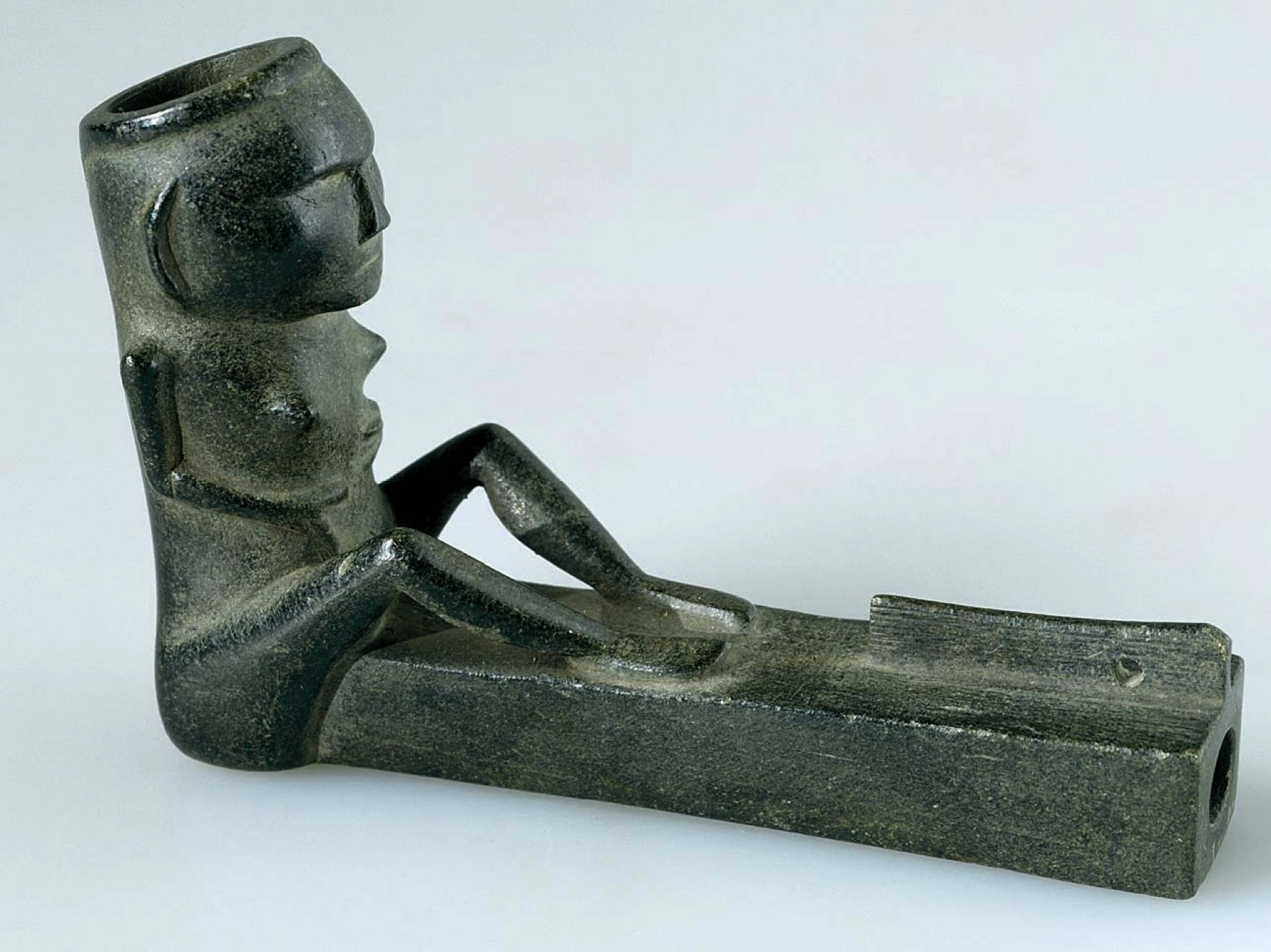
W. Silas Dinsmoor, George Washington’s appointed agent to the Cherokee people, donated a stone pipe bowl like this one to the Philosophy Chamber. Pipes, thought to promote mutual understanding, were often smoked during treaty negotiations. Dinsmoor’s donation also memorialized the imminent decline of Cherokee culture.
Peabody Museum of Archaeology and Ethnology, PM# 99-12-70/53559 (digital file 99170068). © President and Fellows of Harvard College
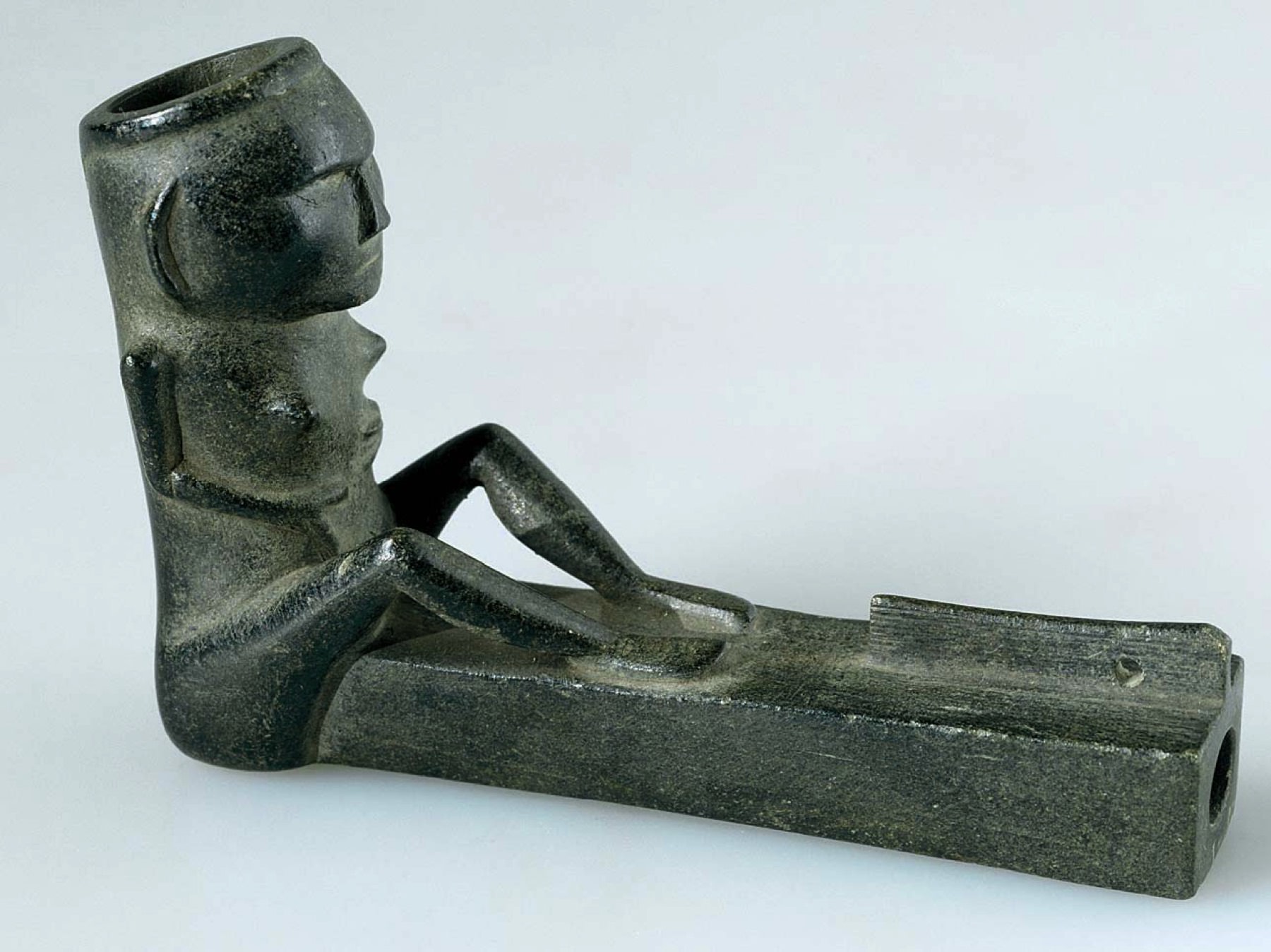
W. Silas Dinsmoor, George Washington’s appointed agent to the Cherokee people, donated a stone pipe bowl like this one to the Philosophy Chamber. Pipes, thought to promote mutual understanding, were often smoked during treaty negotiations. Dinsmoor’s donation also memorialized the imminent decline of Cherokee culture.
Peabody Museum of Archaeology and Ethnology, PM# 99-12-10/53119 (digital file 60740101). © President and Fellows of Harvard College
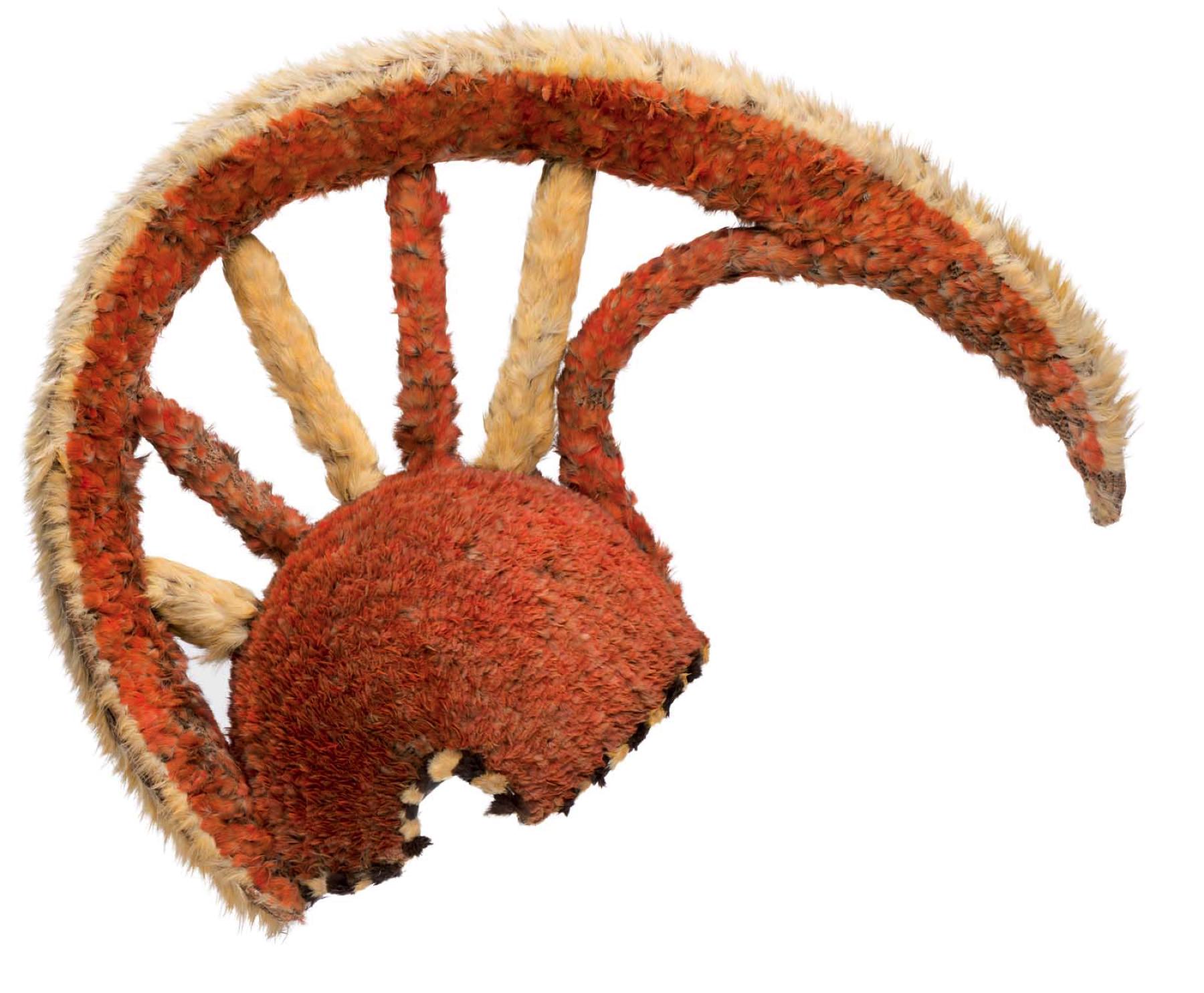
Objects brought home by the Columbia—the first American ship to circumnavigate the globe—and donated by the owners and crew include this mahiole,a helmet made from 10,000 feathers plucked from living honey creepers, small, rare birds native to Hawaii. Featherworks like this are among the most intricately crafted objects in the collection.
Peabody Museum of Archaeology and Ethnology, PM# 99-12-70/53559 (digital file 99170068). © President and Fellows of Harvard College
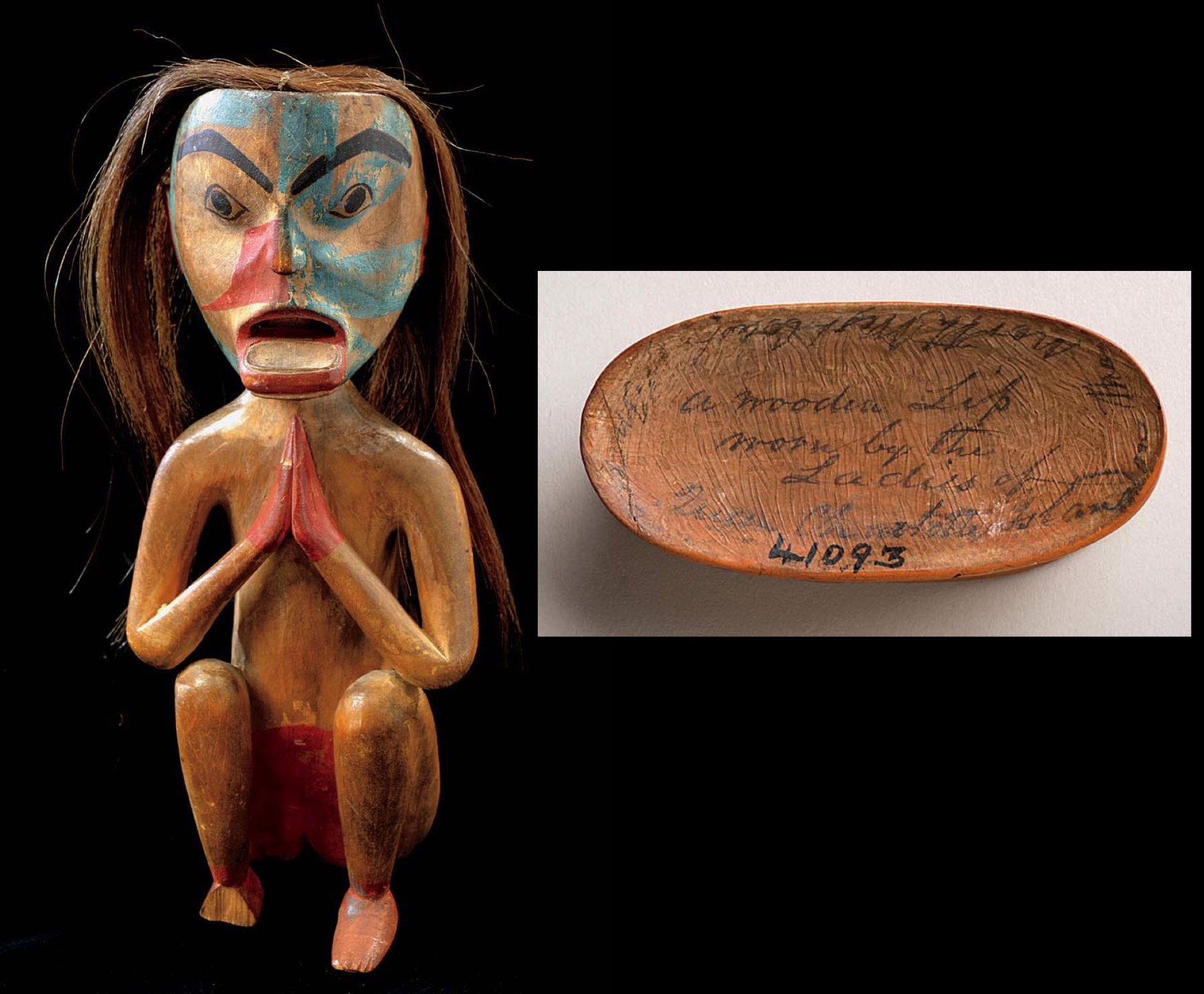
Sailors on the Columbia were fascinated by the wooden lower-lip ornaments worn by indigneous women in the Pacific Northwest. The use of these labrets to extend the lower lip is illustrated by the wooden doll, which was probably made specifically for trade with Western visitors.
From left: Peabody Museum of Archaeology and Ethnology, PM# 99-12-10/53093 (digital file 60741707). ©President and Fellows of Harvard College and Peabody Museum of Archaeology and Ethnology, PM# 87-18-10/41093 (digital file 99320183). © President and Fellows of Harvard College
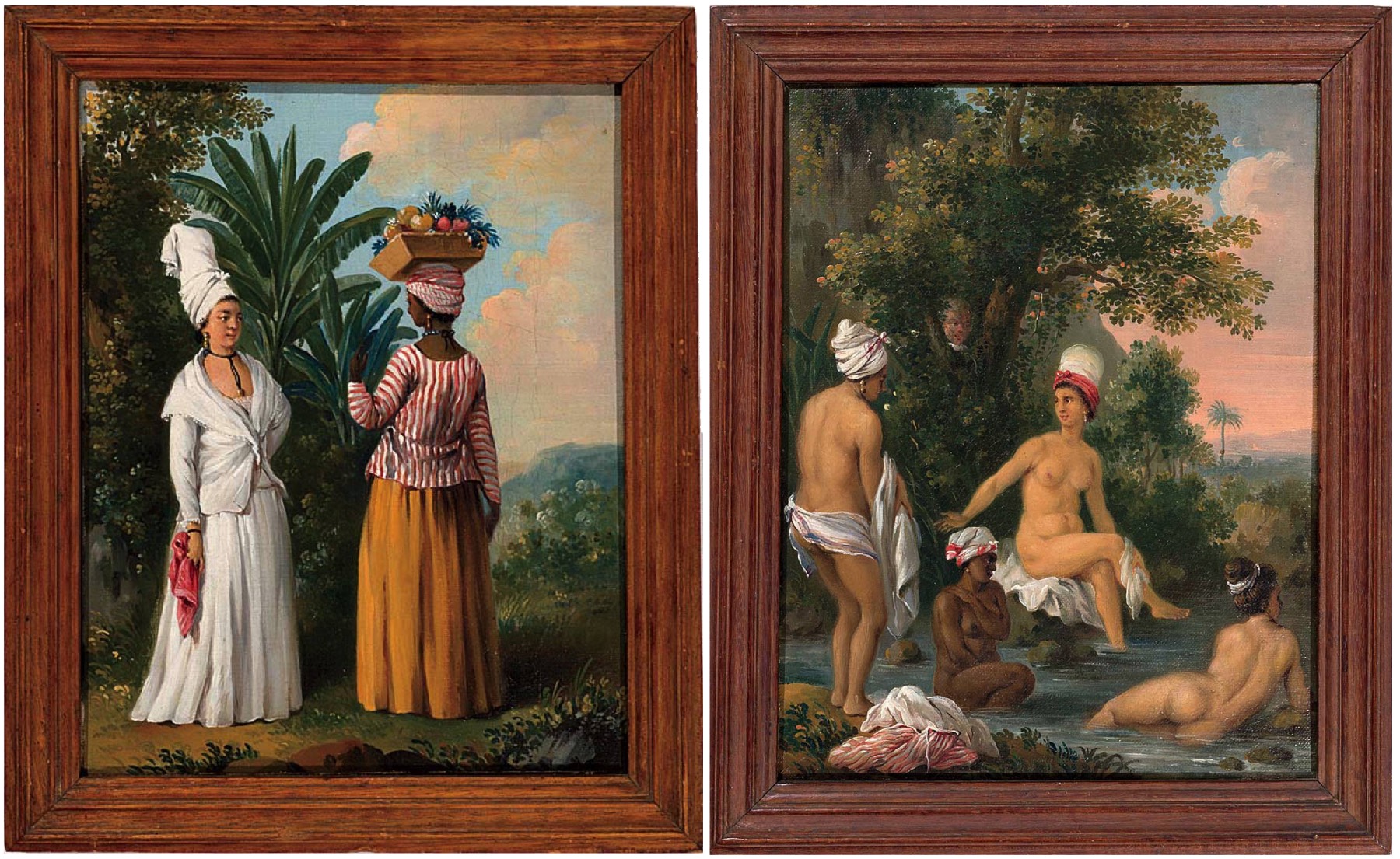
Paintings (c. 1770-1790) by Agostino Brunias, an Italian artist working in the Caribbean, depict free and enslaved women of mixed and African descent. The works, donated by the Boston-born attorney general of St. Kitts, idealize plantation life, showing a French Mulatress of St. Dominica and a Negro Woman and Mulatresses and Negro Woman Bathing, as a white peeping Tom observes. Labels on the backs of these paintings suggest they may have been used to teach theories of racial classification in the natural-history curriculum.
From left: Peabody Museum of Archaeology and Ethnology, PM# 975-5-30/9416b (digital file 99320188). © President and Fellows of Harvard College; Peabody Museum of Archaeology and Ethnology, PM# 975-5-30/9416d (digital file 99320190). ©President and Fellows of Harvard College
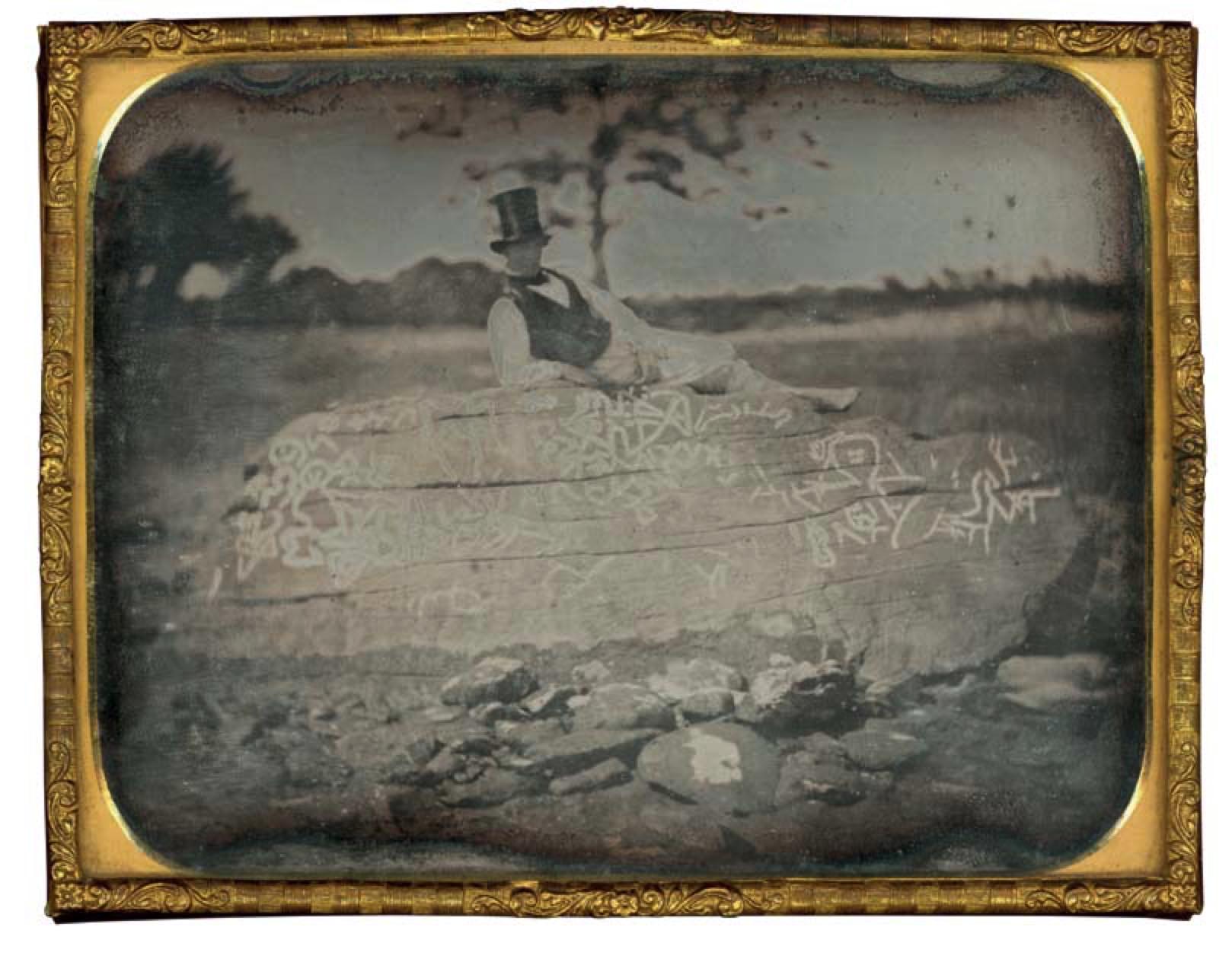
The fame of Dighton Rock, a 40-ton boulder in southeastern Massachusetts that lay in the mouth of the Taunton River, outlasted the Philosophy Chamber itself, because the inscriptions on its face were thought to be key to understanding the peopling of America. In this 1853 daguerreotype taken by Horatio King of Seth Eastman, an artist active in recording Native American life, the rock face may have been “chalked” to enhance the visibility of the inscriptions.
Collection of the Massachusetts Historical Society, Boston

In the eighteenth century, an indigenous origin for these petroglyphs was thought unlikely. The life-size, 11-foot-long by three-foot-high tracing (above)—which Stephen Sewall, A.B. 1761, made of the inscriptions in 1768—was seen variously as evidence of visits by Norsemen, ancient Phoenicians, East Asians, Egyptians, or Israelites. Yale president Ezra Stiles cited the carvings as evidence that Native Americans were the cursed children of Canaan destined by biblical prophecy to be the slaves of the white colonists.
Peabody Museum of Archaeology and Ethnology, PM# 967-28-10/45474 (digital file 99270006). © President and Fellows of Harvard College
Even in philosophy and literary studies, Roberts continues, an approach akin to the art historians’ has arisen under the catchall term of “new materialism.” Philosophers are allowing that “maybe there is philosophical knowledge in objects” and the field should not be only about “an ability to abstract away from things. So, there is a lot of movement right now in the academy toward unlocking the knowledge and information that is embedded in material objects, things that aren’t textual or numerical.”
More professors are accordingly integrating forms of experiential learning into their teaching, she says. “Instead of having students sit and listen to you talk for an hour, you give them something to do with their hands, a puzzle to solve, some kind of multidimensional experience. In a way,” she says, “we are circling back to this eighteenth-century moment, when it was assumed that if you wanted to understand a complex physical law, the most effective way to learn that was from a scientific demonstration in a classroom, where the instructor would show something or provide a bodily experience.”
And so, at this moment of pedagogical rediscovery, after 200 years in obscurity, the “lost museum”—itself rediscovered—will reopen on May 19 as an exhibition at the Harvard Art Museums, with close to 100 of the original objects on display. (The exhibition will travel to The Hunterian in 2018.) Viewers who become especially intrigued, take note: many of the objects are still missing.
